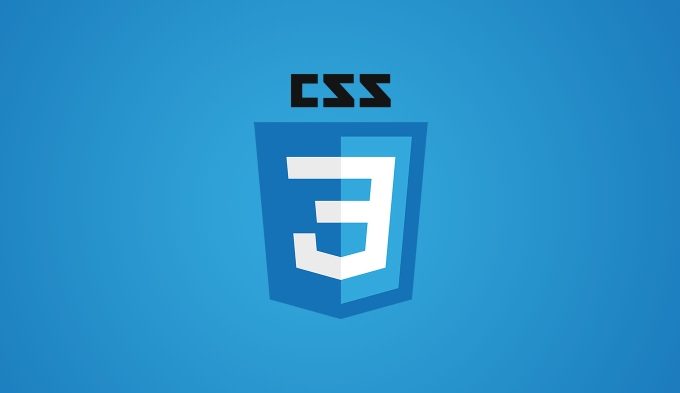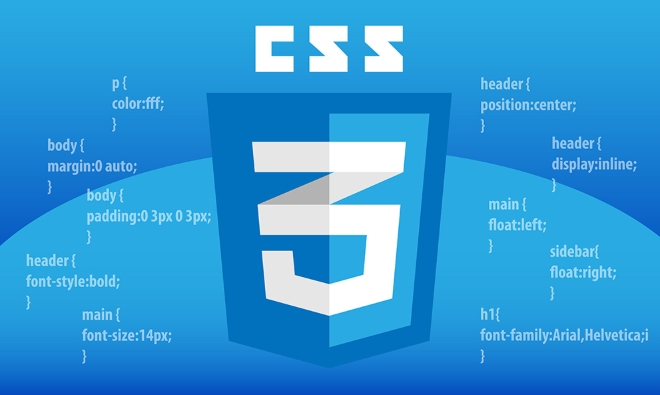To implement CSS gradient borders, you need to use a workaround because border does not directly support gradients; 1. Use background-clip: border-box and combine transparent borders and padding to make the background gradients appear in the border area; 2. Use ::before or ::after pseudo-elements to create an absolutely positioned gradient layer and place it on the bottom layer, suitable for animations and rounded corners; 3. border-image can directly apply gradient borders, with simple syntax but limited support for rounded corners; it is recommended to choose according to requirements: background-clip is preferred for compatibility, rounded corners or animations, and border-image is used for simple scenes. The final effect can seamlessly simulate gradient borders.

Creating a gradient border with CSS isn't as straightforward as applying a background gradient, since the border property doesn't directly support gradients. However, you can achieve a gradient border effect using a few clever workarounds. Here are the most effective methods:

1. Use background with border-box and background-clip
This is one of the cleanest and most widely supported approaches. You use a gradient background and clip it to the border area using background-clip: border-box , while ensuring the element has a border-like appearance via padding or transparent borders.
.gradient-border {
padding: 10px; /* Creates space for the "border" */
background: linear-gradient(45deg, #ff7a00, #f800ff) border-box;
border: solid 2px transparent;
background-clip: border-box;
box-sizing: border-box;
}How it works:

- The
borderis set totransparentso it doesn't block the background. -
background-clip: border-boxensures the background (gradient) only appears under the border area. -
paddingpushes the content inward, creating space where the gradient shows through as a border.
? Works well for static borders and supports all gradient types.
2. Use ::before or ::after pseudo-elements
This method gives more control and is great for complex layouts or when you need animation.

.gradient-border {
position: relative;
padding: 10px;
}
.gradient-border::before {
content: '';
position: absolute;
top: -2px;
left: -2px;
right: -2px;
bottom: -2px;
background: linear-gradient(45deg, #ff7a00, #f800ff);
z-index: -1;
border-radius: inherit; /* Match the container's corners */
}Key points:
- The pseudo-element is sized slightly larger than the container to act as a border.
-
z-index: -1places it behind the content. - Use
border-radius: inheritif your container is rounded.
? Great for animations or dynamic effects.
?? Requiresposition: relativeon the parent.
3. Use outline with gradient? (Spoiler: Doesn't work)
You might think of using outline , but CSS outlines don't support gradients and can't be styled like borders with background images. So this method is not viable.
4. For simple cases: border-image
You can use border-image with a gradient, which is supported in modern browsers.
.gradient-border {
border: 4px solid;
border-image: linear-gradient(45deg, #ff7a00, #f800ff) 1;
padding: 10px;
}Explanation:
-
border-imageapplies the gradient as the border. - The
1at the end is theborder-image-slicevalue — it fills the border area.
? Simple syntax.
?? Less control over rendering, and may not work perfectly withborder-radius.
Which method should you use?
- For simplicity and support: Use
border-image. - For rounded corners and modern layouts: Use the
::beforepseudo-element. - For minimum markup and clean code: Use
background-clip: border-boxwith transparent borders.
Basically, you're faking a gradient border using background techniques — but with modern CSS, it looks seamless. Pick the method that best fits your layout and browser support needs.
The above is the detailed content of How to create a gradient border with CSS?. For more information, please follow other related articles on the PHP Chinese website!

Hot AI Tools

Undress AI Tool
Undress images for free

Undresser.AI Undress
AI-powered app for creating realistic nude photos

AI Clothes Remover
Online AI tool for removing clothes from photos.

Clothoff.io
AI clothes remover

Video Face Swap
Swap faces in any video effortlessly with our completely free AI face swap tool!

Hot Article

Hot Tools

Notepad++7.3.1
Easy-to-use and free code editor

SublimeText3 Chinese version
Chinese version, very easy to use

Zend Studio 13.0.1
Powerful PHP integrated development environment

Dreamweaver CS6
Visual web development tools

SublimeText3 Mac version
God-level code editing software (SublimeText3)

Hot Topics
 How to use PHP to build social sharing functions PHP sharing interface integration practice
Jul 25, 2025 pm 08:51 PM
How to use PHP to build social sharing functions PHP sharing interface integration practice
Jul 25, 2025 pm 08:51 PM
The core method of building social sharing functions in PHP is to dynamically generate sharing links that meet the requirements of each platform. 1. First get the current page or specified URL and article information; 2. Use urlencode to encode the parameters; 3. Splice and generate sharing links according to the protocols of each platform; 4. Display links on the front end for users to click and share; 5. Dynamically generate OG tags on the page to optimize sharing content display; 6. Be sure to escape user input to prevent XSS attacks. This method does not require complex authentication, has low maintenance costs, and is suitable for most content sharing needs.
 PHP creates a blog comment system to monetize PHP comment review and anti-brush strategy
Jul 25, 2025 pm 08:27 PM
PHP creates a blog comment system to monetize PHP comment review and anti-brush strategy
Jul 25, 2025 pm 08:27 PM
1. Maximizing the commercial value of the comment system requires combining native advertising precise delivery, user paid value-added services (such as uploading pictures, top-up comments), influence incentive mechanism based on comment quality, and compliance anonymous data insight monetization; 2. The audit strategy should adopt a combination of pre-audit dynamic keyword filtering and user reporting mechanisms, supplemented by comment quality rating to achieve content hierarchical exposure; 3. Anti-brushing requires the construction of multi-layer defense: reCAPTCHAv3 sensorless verification, Honeypot honeypot field recognition robot, IP and timestamp frequency limit prevents watering, and content pattern recognition marks suspicious comments, and continuously iterate to deal with attacks.
 What are common CSS browser inconsistencies?
Jul 26, 2025 am 07:04 AM
What are common CSS browser inconsistencies?
Jul 26, 2025 am 07:04 AM
Different browsers have differences in CSS parsing, resulting in inconsistent display effects, mainly including the default style difference, box model calculation method, Flexbox and Grid layout support level, and inconsistent behavior of certain CSS attributes. 1. The default style processing is inconsistent. The solution is to use CSSReset or Normalize.css to unify the initial style; 2. The box model calculation method of the old version of IE is different. It is recommended to use box-sizing:border-box in a unified manner; 3. Flexbox and Grid perform differently in edge cases or in old versions. More tests and use Autoprefixer; 4. Some CSS attribute behaviors are inconsistent. CanIuse must be consulted and downgraded.
 How to build a PHP Nginx environment with MacOS to configure the combination of Nginx and PHP services
Jul 25, 2025 pm 08:24 PM
How to build a PHP Nginx environment with MacOS to configure the combination of Nginx and PHP services
Jul 25, 2025 pm 08:24 PM
The core role of Homebrew in the construction of Mac environment is to simplify software installation and management. 1. Homebrew automatically handles dependencies and encapsulates complex compilation and installation processes into simple commands; 2. Provides a unified software package ecosystem to ensure the standardization of software installation location and configuration; 3. Integrates service management functions, and can easily start and stop services through brewservices; 4. Convenient software upgrade and maintenance, and improves system security and functionality.
 Describe the `vertical-align` property and its typical use cases
Jul 26, 2025 am 07:35 AM
Describe the `vertical-align` property and its typical use cases
Jul 26, 2025 am 07:35 AM
Thevertical-alignpropertyinCSSalignsinlineortable-cellelementsvertically.1.Itadjustselementslikeimagesorforminputswithintextlinesusingvalueslikebaseline,middle,super,andsub.2.Intablecells,itcontrolscontentalignmentwithtop,middle,orbottomvalues,oftenu
 What is the accent-color property?
Jul 26, 2025 am 09:25 AM
What is the accent-color property?
Jul 26, 2025 am 09:25 AM
accent-color is an attribute used in CSS to customize the highlight colors of form elements such as checkboxes, radio buttons and sliders; 1. It directly changes the default color of the selected state of the form control, such as changing the blue check mark of the checkbox to red; 2. Supported elements include input boxes of type="checkbox", type="radio" and type="range"; 3. Using accent-color can avoid complex custom styles and extra DOM structures, and maintain native accessibility; 4. It is generally supported by modern browsers, and old browsers need to be downgraded; 5. Set accent-col
 How to compile SCSS to CSS?
Jul 27, 2025 am 01:58 AM
How to compile SCSS to CSS?
Jul 27, 2025 am 01:58 AM
InstallDartSassvianpmafterinstallingNode.jsusingnpminstall-gsass.2.CompileSCSStoCSSusingthecommandsassinput.scssoutput.css.3.Usesass--watchinput.scssoutput.csstoauto-compileonsave.4.Watchentirefolderswithsass--watchscss:css.5.Usepartialswith_prefixfo
 How to change text color in CSS?
Jul 27, 2025 am 04:25 AM
How to change text color in CSS?
Jul 27, 2025 am 04:25 AM
To change the text color in CSS, you need to use the color attribute; 1. Use the color attribute to set the text foreground color, supporting color names (such as red), hexadecimal codes (such as #ff0000), RGB values (such as rgb(255,0,0)), HSL values (such as hsl(0,100%,50%)), and RGBA or HSLA with transparency (such as rgba(255,0,0,0.5)); 2. You can apply colors to any element containing text, such as h1 to h6 titles, paragraph p, link a (note the color settings of different states of a:link, a:visited, a:hover, a:active), buttons, div, span, etc.; 3. Most






